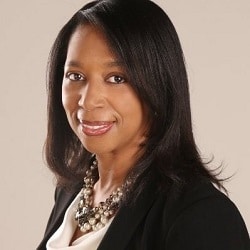
Mastin: Initiatives shifting the dial
One-off training sessions and general employee wellbeing schemes do not go far enough to ensure diversity and inclusion, and nothing short of ethnic minority lawyers occupying senior roles in firms will show real change has occurred, according to a report by the Black Solicitors Network (BSN).
The 12th edition of the Diversity Legal Table, published by the BSN and the Law Society, echoed a report put out last week by the Legal Services Board that the danger with one-off education sessions, such as unconscious bias training, was that – while undoubtedly useful – they presented firms with the opportunity to view them as a ‘quick fix’ solution.
Problems of entrenched prejudice actually involved spending considerable time and money to resolve, it stressed.
The report said Black, Asian and ethnic minority solicitors reported lower levels of wellbeing and greater stress compared to white solicitors – 24% compared to 18% respectively.
These disparities were compounded by some BAME lawyers feeling that allegedly ‘safe spaces’ created to discuss issues of inequality in fact achieved little, while opportunities talk to senior managers were limited.
The report concluded that, not until now-junior black lawyers had reached senior positions would real change have occurred.
“Only when ‘black and female’ is as likely to be observed at senior, as at junior levels, of practice will culture have truly changed.
“Ultimately the challenge remains, to transform the increasing diversity at more junior levels of practice into diversity at the top.”
In the report’s lead article, academics Professor Peter Unwin and Dr Fatima Maatwk warned: “Strategic managers and leaders are increasingly fluent in talking-the-talk of diversity, but walking-the-walk involves difficult steps… [including] disruptive change and substantial resourcing.”
They highlighted City firm Bryan Cave Leighton Paisner’s (BCLP) programme of having an independent resource manager involved in supporting the selection of teams as being particularly effective.
Another sound practice, they said, was ‘reverse mentoring’, which involved pairing people of different generations and statuses, to the benefit of both.
The case studies examined in detail diversity and inclusion (D&I) initiatives by Allen & Overy, BCLP, Freshfields Bruckhaus Deringer, Herbert Smith Freehills, Latham & Watkins, Linklaters and Norton Rose Fulbright.
BCLP was notable for implementing other innovative ideas to improve the experience of Black lawyers, such as a dedicated D&I weekly podcast, a diversity-orientated salary review process and a mentoring discussion group for minority BCLP lawyers.
The firm claimed it already had almost 16% of its 134 partners identifying as being from an ethnic minority.
Common to all firms were reverse mentoring, ambitious targets for improving the showing of under-represented groups at senior levels and schemes for boosting ethnic minority recruitment and retention. Anti-racism or unconscious bias training had been adopted by most firms.
Several firms could point to having won awards for being attractive to employees generally or especially for promoting social mobility.
Also, a number acknowledged that their record on the representation of Black people in particular left something to be desired and that a culture change was required.
The report by and large approved of the measures taken and concluded that among top firms intentions were genuine.
It went on: “The very best firms create action plans based on detailed analysis of their people data and other forms of consultation, developing interventions in partnership with internal and external stakeholders – including their wider communities, clients and universities.”
It said one area that might be strengthened in future was the systematic collection of data to identify both successes and where change was needed. The Legal Services Board report also recommended this.
The report concluded that the firms’ actions were partly a matter of preserving brand reputation but that all of them realised the potential for missing out on untapped productivity if ethnic minority talent was not nurtured.
It said: “A significant resource commitment from firms, recognising both a moral and business case for change, is encouraging for those who are becoming frustrated with the pace of change.”
The evident application of resources to improving diversity could also help attract, for instance, Black men from less-advantaged socio-economic backgrounds to aspire to a legal career.
Several firms had discussion-type affinity networks of existing Black lawyers and employees which the report said ensured their voices were heard.
Other notable programmes were those aimed at promoting the careers of ethnic minority women.
Paulette Mastin, chair of the BSN and editor of the report, said evidence-based D&I practice and initiatives were necessary “to shift the dial”. She added: “We look forward to continuing to work together [with our partners] to drive meaningful and sustainable change in the legal profession.”













When can one’s sex or ethnicity determine one’s ability to be a good lawyer?